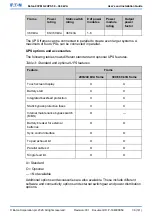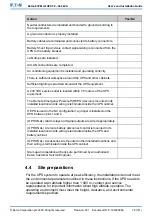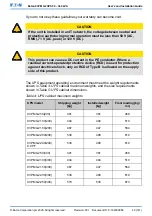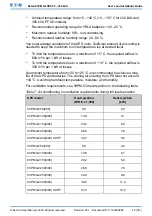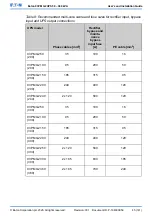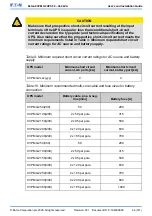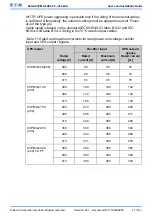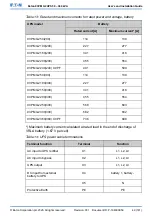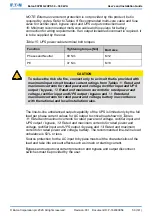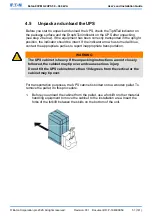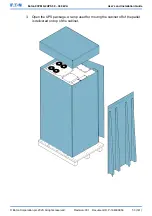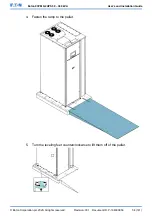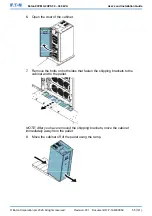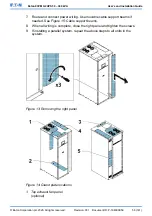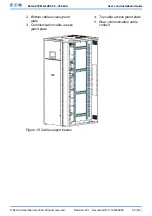
4.4.3
UPS system power wiring preparations
NOTE: If you install an external maintenance bypass (MBS):
•
The UPS static bypass input (X2) and UPS rectifier input (X1) must have
external isolators to isolate these feeds from the external MBS input during
service operations.
•
Do not connect the external MBS input to a different source than the UPS
static bypass input (X2).
When you plan and do the installation, read and understand these notes:
•
Refer to national and local electrical codes for acceptable external wiring
practices.
•
To allow for future kVA upgrades (software and/or hardware), consider using
conductors sized for full bypass rating of the UPS.
•
Material and labor for external wiring requirements must be provided by
designated personnel.
•
For external wiring, use copper cable rated for 70 °C at minimum. See the
appropriate information in
Tables 8: Recommended multi-core cable and
fuse sizes for rectifier input, bypass input and UPS output connections
and
10: Minimum recommended multi-core cable and fuse sizes for battery
connection
. Cable sizes are based on using the specified breakers.
•
If cables are run in an ambient temperature greater than 30 °C, higher
temperature cable and/or larger size cable could be necessary.
•
The bypass feed into this equipment uses three phases or three phases and
neutral. The rectifier feed into this equipment uses three phases or three
phases and neutral. The phases must be symmetrical about ground (from a
Wye source) for proper equipment operation.
•
If the load requires a neutral, a bypass source neutral must be provided. If
the load does not require a neutral and there is no neutral conductor
connected at the bypass input, a neutral must be installed to source star
point.
•
Include a readily accessible disconnect device in all fixed input wiring.
WARNING
Do not disconnect the bypass neutral without disconnecting the bypass
phases at the same time.
© Eaton Corporation plc 2020. All rights reserved.
Revision: 001
Document ID: P-164000956
44 (141)
Eaton 93PM G2 UPS 50 – 360 kVA
User’s and Installation Guide







